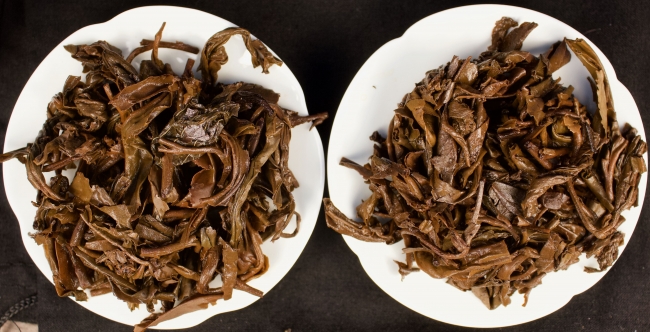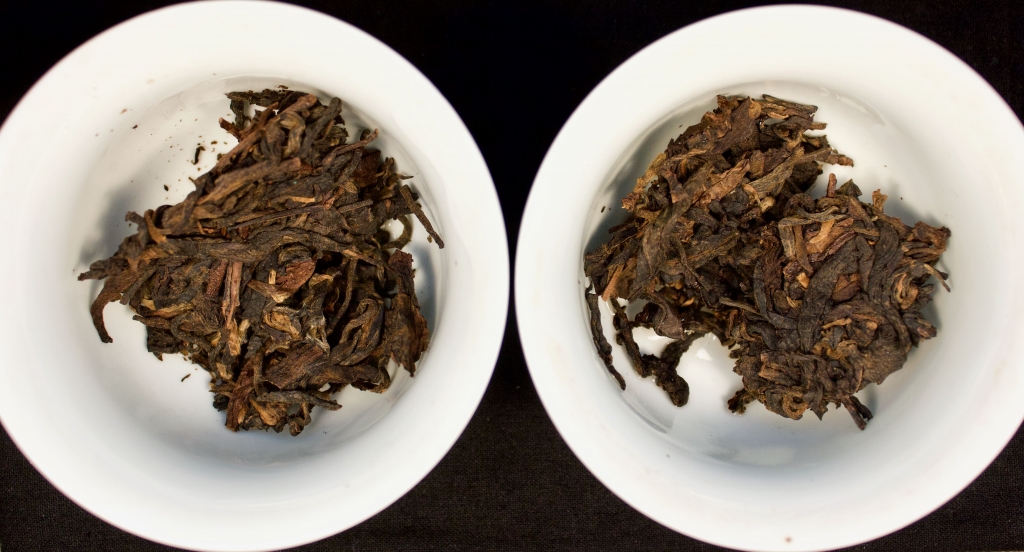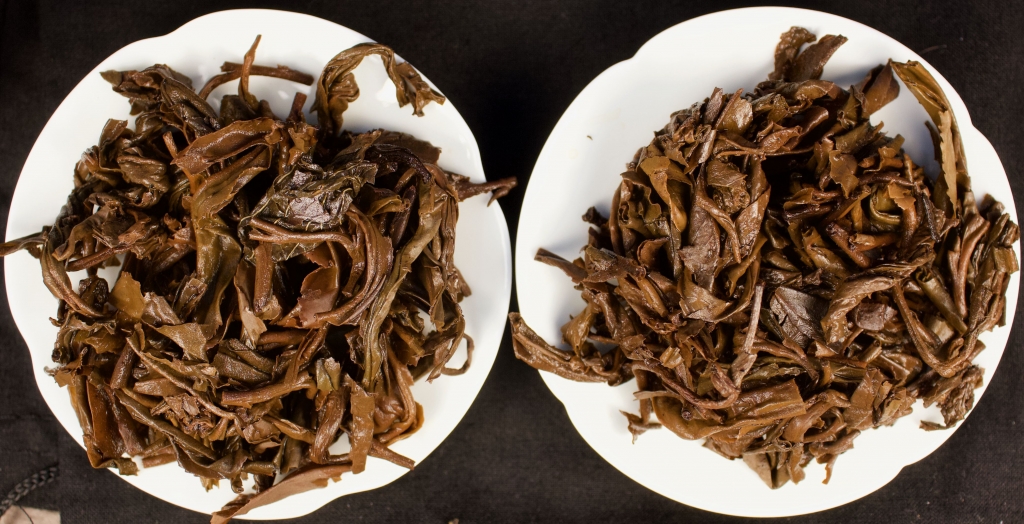
Brown Changtai tasting
Brown Changtai is a series of cakes made from Jinggu material in the early days of the Changtai Factory in 2003-4. Several batches were made, with different permutations of stamps and barcodes on the neifei and wrapper. Including the two teas reviewed in this post, I’ve tried 7 different storage examples and batches over the past few years, looking for a particularly good version. What i’ve found so far is that the batch type is a lot less important than the storage quality. Most of the examples I’ve had, of this tea but also Changtai more generally, didn’t stand up sufficiently to the storage they received and were overpowered by it. I wanted to record one of the tastings that I’m doing for Teas We Like, even if we haven’t yet reached agreement on carrying any of the Brown Changtais, or any Changtais at all, for that matter.
Chan Kam Pong, author of “A Glossary of Chinese Puerh Tea” and aka “Cloud”, has heavily hyped this tea over the years, and sells it at insane prices at his website. He believes the single stamp (on neifei) and no barcode (on wrapper) version is best, followed by the single stamp with barcode, which he outrageously christens as the successor to the 1988 qing bing, followed by the dual stamp without barcode version. There are more versions… The batches I am comparing here are the dual stamp without barcode (LEFT) and the single stamp with barcode (RIGHT) versions. I often test teas by giving them a hard steep for about 2 minutes on the 4th steep and then a lighter steep afterwards to see how they perform. A puerh tea which does not produce significant deep bitterness and some (but not excessive) astringency in the hard steep is given a hard pass. The way the bitterness and astringency transform and dissipate is also important, etc. etc.

Clean dry storage aroma on dry leaf. Woody smell.
- Thick, lighter red. Lighter flavour. No wet storage taste.
- Clear. Engaging taste, good sweet aftertaste.
- More astringency. Sweet aftertaste. Lemon meringue pie. Very heating.
- (Hard steep) Strong bitterness, big astringency. Not drying, takes about 2 minutes to fully dissolve. Less comfortable. More oily, briny, more tea taste.
- Lighter steep is quite good, bitterness is not prominent and the strong sweetness returns.
Clear from dry leaf that this has seen some humid storage. Not HK stored however.
- Wet storage smell, minerality. Wood taste, much smoother, slightly sweeter.
- Darker. Clear red. Woody, but also humid mineral taste in a good way.
- Complex bittersweetness. Oily.
- (Hard steep) Bitter-mineral-juicy. Strong bitterness and astringency, which does melt away. Grape stem chewiness.
- Lighter steep – humidity is even clearer now and the tea is less interesting at this point.


Despite their divergent storage and batch type, these teas are quite similar in taste and content, they both clearly have some bitterness and astringency with decent woody sweetness (though the sweetness is not remarkable, and the bitterness/astringency is nowhere near to things like 1988 7542). The leaves look good, unchopped, sturdy leaves with plenty of peach fuzz and it looks like good processing. I like both of these teas, I have only had two Changtais I like better, one being a dry stored brown Changtai from a collector that has none left, and the other being the red Changtai I reviewed previously (also from a collector who has none remaining). I’ll assign grades of 6.5 on the left and 5.6 on the right. Unclear whether one of these will make the cut at TWL, but if one does, I can assure you it will be about an order of magnitude smaller markup than Mr Cumulonimbus.
June 22, 2020 @ 8:29 am
Hi
Kingteamall has a Brown Changtai, but the wrapper says 2005/8.
Was this tea produced in 2005?
June 22, 2020 @ 9:09 am
The 2005 is a different tea, different wrapper, different year … Different!